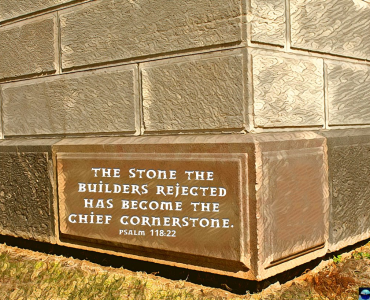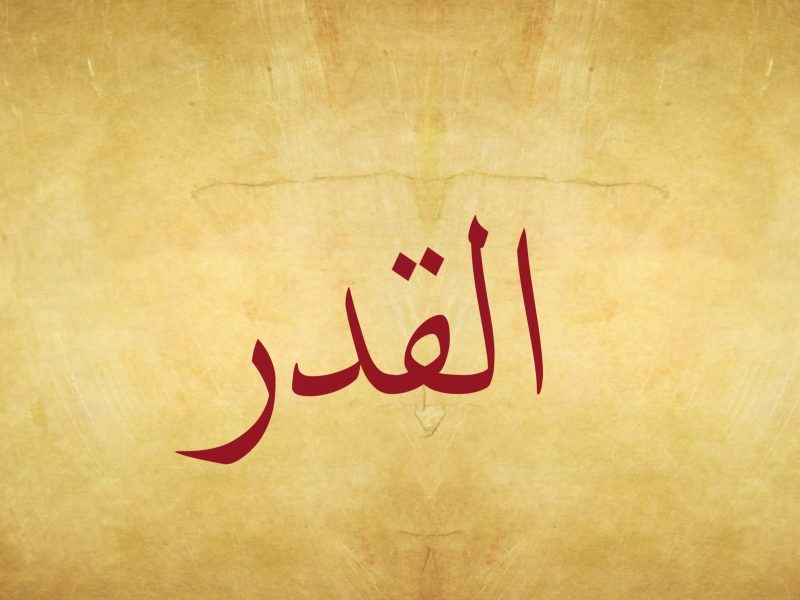Contrary to what is commonly believed, the day precedes the night. The Glorified Allah (s.w.t.) commands:
لَا الشَّمْسُ يَنبَغِي لَهَا أَن تُدْرِكَ الْقَمَرَ وَلَا اللَّيْلُ سَابِقُ النَّهَارِ وَكُلٌّ فِي فَلَكٍ يَسْبَحُونَ
“It is not for the sun to overtake the moon, nor does the night outstrip the day. They float each in an orbit.[1]” (Ya-Sin 36:40)
Since the night may not outstrip the day, the new day starts with the rise of sun. That is why the first prayer in two verses declaring the times of obligatory prayers is the noon prayer.
وَأَقِمِ الصَّلَاةَ طَرَفَيِ النَّهَارِ وَزُلَفًا مِنَ اللَّيْلِ إِنَّ الْحَسَنَاتِ يُذْهِبْنَ السَّيِّئَاتِ ذَلِكَ ذِكْرَى لِلذَّاكِرِينَ
“Offer the prayer in two parts of the daytime and in the hours of the night that are closer to daytime. Surely, good works drive away evil works. This is the correct information for those who use their knowledge.” (Hood 11:114)
Taraf (طرف), means each of the parts of a thing (2). “Two parts of the day” means its two parts. As it could be seen in the following verse, the first part for praying is the noon time when the sun moves to the west. The second is the time for afternoon (‘asr) prayer. These two times do exist in all cultures.
The text of the verse contains the word zulaf (زلف), the plural form of zulfa (زلفة), which has the meaning of “closeness”. In Arabic, a plural expression states for at least three. The expression “close parts of the night” “زُلَفًا مِّنَ اللَّيْل” in the verse designates at least three times of the night that are close to the daytime. These are the sunset (maghreb), nightfall (ishaa’) and dawn (fajr) prayers, which bear the signs of the daytime.
The night comprises of three parts; the first is the time for the sunset and nightfall prayers. These start with the sunset, lasting till the falling of darkness (ghasaq al-layl). The second part is the time for midnight prayer (tahajjud), covering the period from the ghasaq al-layl to the break of dawn. This is called half of the night (nisf al-layl) (نصف الليل) or the middle of the night (wasat al-layl) (وسط الليل). The third part is the time for the dawn (fajr) prayer, which starts with the onset of break of dawn. The prohibitions begin for the fasting person from this moment onwards. The dawn prayer could be performed until the sunrise.
The sunset (maghreb) prayer could be performed from the sunset until the redness on the west horizon disappears. From then on is the time for nightfall (ishaa’) prayer. It continues until the whiteness on the west horizon disappears and the sky becomes pitch-dark. When the sky is pitch-dark, the first part of the night that is close to the daytime ends.
Abdullah Bin Omar said: One night we sat down to wait the Prophet (p.b.u.h) of Allah for nightfall (ishaa’) pray. He came as the third of the night was passing by, or afterwards. I did not know whether he was busy. He said: “Are you waiting for this prayer?” I would have lead my community pray at this hour if it had not been difficult for them.” Then he ordered the caller for prayer (muezzin) to call for prayer (3).
If the nightfall prayer would not be performed before the darkness falls, those who come to the mosque will find it difficult to return to their houses.
The second verse concerning the issue is the following :
أَقِمِ الصَّلَاةَ لِدُلُوكِ الشَّمْسِ إِلَى غَسَقِ اللَّيْلِ وَقُرْآَنَ الْفَجْرِ إِنَّ قُرْآَنَ الْفجْرِ كَانَ مَشْهُودًا
“Perform the prayers at the sun’s decline till the darkness of the night, and during the intensification of the (lights of) dawn; for the intensification of the (lights of) dawn is visible”. (Al-Isra / The Night Journey 17:78)
According to this verse, the first prayer is the noon prayer, time of which starts as the sun declines towards west, namely when the sun passes through the meridian of our location. Since the previous verse obliges to perform two prayers before sunset, it follows that one more prayer is required after the noon prayer. This is the afternoon (‘asr) prayer between noon and sunset prayers. Since the sign that separates noon prayer from afternoon prayer is not specified clearly in Quran, our Prophet (p.b.u.h) had sometimes performed these two prayers successively by combining them.
The expression “till the darkness of the night” in the verse indicates the time from sunset to the pitch-darkness after complete disappearance of the light on the west horizon. This is the latest time for performing nightfall prayer, as mentioned above. The time of the sunset prayer is before it. Since the sign that separates sunset prayer from nightfall prayer is not mentioned in Quran, our Prophet (p.b.u.h) occasionally combined these two prayers.
According to the leading scholars of four fiqh schools, the time for nightfall prayer lasts until the darkness. Serahsi, a Hanafi scholar, says: “Imam Muhammad wrote in al-Kitab that the time for nightfall prayer is until midnight” (4).
The midnight referred to here is the period from pitch-darkness of the sky till the break of dawn.
Imam Shafi states : “The latest time for nightfall prayer is until one third of the night passes. The time for this prayer will elapse after this part of the night elapses. Neither of the narrations quoted from the Prophet, peace be upon him, demonstrates anything other than the fact that the time elapses after that period.
According to the narration by his son, Abu’l Fadhl, Ahmad Ibn Hanbal said: “The time for the nightfall prayer starts when the sunset flow disappears. The latest time is one third of the night for some, and the midnight for others.
This opinion is identical with the foregoing ones. However, as the standpoint that the day starts with the break of dawn became widespread among our scholars, the concept of “three parts of the night” had become vague.
Ibn al-Qasim narrates the following: “We asked Imam Malik, ‘(Why do)they delay the prayer until one third of the night(?)’. Fiercely condemning, he as if said: ‘They ought to pray in the manner (other) people do.’ He was as if indulging what people did. They perform the nightfall prayer a little sooner than the disappearance of red dawn. He said: ‘Neither the Messenger of Allah, peace be upon him, nor Abu Bakr or Omar had delayed so much.’”
Subsequent scholars of these schools delayed the time for nightfall prayer until the dawn prayer, without relying on any evidence. Yet, for the people will sleep and rest during the time between nightfall prayer and dawn prayer, none should be disturbed during this period. Allah (SWT) says:
“Oh you who believe! Let those under your guardianship, and the ones among you who have not come of age ask your permission (before coming into your room) on three occasions: before dawn prayer, in the afternoon when you take off your clothes (for sleeping) and after the isha’ prayer. These are your three times of undress. Outside those times it is not a sin for you or for them to move about attending to each other. Thus, Allah makes clear the signs for you for that Allah is all-knowing and judges rightly. When the children among you come of age, let them (also) ask for permission, as do those senior to them (in age). Thus, Allah makes clear His signs to you for that Allah is all-knowing and judges rightly.” (An-Noor/ The Light 24:58-59).
Every night our Prophet (p.b.u.h) used to wake up after a while of sleep, and perform the midnight prayer (tahajjud). Because Allah (SWT) ordered him to do this:
وَمِنَ اللَّيْلِ فَتَهَجَّدْ بِهِ نَافِلَةً لَّكَ عَسَى أَن يَبْعَثَكَ رَبُّكَ مَقَامًا مَّحْمُودًا
“And wake up for prayer in some part of the night as an additional obligation for you: It may be that your Lord will raise you to a station of praise and glory! “ (Al-Isra/ The Night Journey 17:79)
This prayer is optional for any Muslim. Our Prophet is narrated to say:
أَفْضَلُ اَلصَّلَاةِ بَعْدَ اَلْفَرِيضَةِ صَلَاةُ اَللَّيْلِ
“The most virtuous prayer after the obligatory prayers (fardh) is the midnight (tahajjud) prayer” (8)
The time for dawn prayer starts with a clear scene that appears as the dawn breaks and the lights on the horizon intensify. It is understood at that while that the daytime is approaching. This is the third zulfa. It lasts till the sun rises.
Verse 78 of Surat al-Isra (The Night Journey) mentions the time of dawn prayers with the expression “qur’an al-fajr”. Qur’an (قرآن), in Arabic, means “gathering and accumulation” (9). “Qara’tu al-shay’a qur’aanan” قَرَأتُ الشيء قرآنا means “I gathered something” and “I added one to another”; “Qara’tu al-kitaaba qiraatan wa qur’aanan” قرأت الكتاب قراءة وقرآنا means “I have read the book”. Because reading is the act of adding words one another. The name Qur’an given to the last book is due to its nature of gathering all verses that have been revealed. The accumulation in the dawn is the collection of lights in different colors and tones coming from the sun. Since the accumulation lasts until the sunrise, this whole period is the time for a single prayer.
In the sayings (hadeeth) of our Prohpet (p.b.u.h), the first prayer is the noon prayer, and the last one is the dawn prayer. The Messenger of Allah, as narrated by Ibn Abbas, said on the prayer times:
“Jibreel led me in prayer twice near the Ka’be. The first time, we offered the noon prayer (dhuhr) when the shadow was like the thong of a shoe. Then, we offered the afternoon prayer (asr) when the shadow of everything was equal to it, and sunset prayer (maghrib) after sunset when the fasting man breaks his fast, and nightfall (ishaa’) prayer when the twilight (the redness on the west horizon) disappeared, and the dawn prayer (fajr) when one who fasts is forbidden food and drink. The second time, we offerred noon prayer when the shadow of everything was like it in length at the time of afternoon prayer on the previous day. Then we offered the afternoon prayer when the shadow of everything was twice as long. We prayed sunset prayer at the same time as the previous day; we prayed nightfall prayer while one-third of the night was passing (heena dhahaba thuluth al-leyli) (حِينَ ذَهَبَ ثُلُثُ اللَّيْلِ) and dawn prayer when the earth was well-lit. Then Jibreel turned to me and said; “0 Muhammad! This was the time observed by Prophets (p.b.u.t) before you, and the time of prayers is between these two times.” (10) .
Prof. Dr. Abdulaziz BAYINDIR
[1] The issue of orbits of night and day needs to be explained by the relevant fields of science. It is a matter of interest that the orbits of sun, moon, day and night are highlighted in the verse, while the orbit of earth is not. [2] “Wa at’tarafu bi’t-tahreek: en-nahiyatu min nawahee wa el-taifatu min as-shay’i, wa’l jam’u atrafun” Lisan al-Arab. [3] Abu Davud, Salat 7, Hadeeth no 420. [4] Serahsi, Shamsuddin, al-Mabsuut, Egypt l324/1906, v. I, p. 259 [5] Shafi, Muhammad b. İdris, al-Um, Beirut 1393/1973, v. I, p. 74 [6] “Masail al-Imam Ahmad riwayatu ibnihi ebi al-Fadhl Salih” v.2 p.174 [7] Malik b. Anas (d.179 h.), el-Mudawwana, Dar’ul-kutub’il-ilmiyya, 1415 h./1994m. V. I,p. 156. [8] Muslim, Sıyam 38, Hadeeth No (1163) [9] Maqayis al-lugha [10] Tirmidhi, Mawaqeet, 1







Add comment